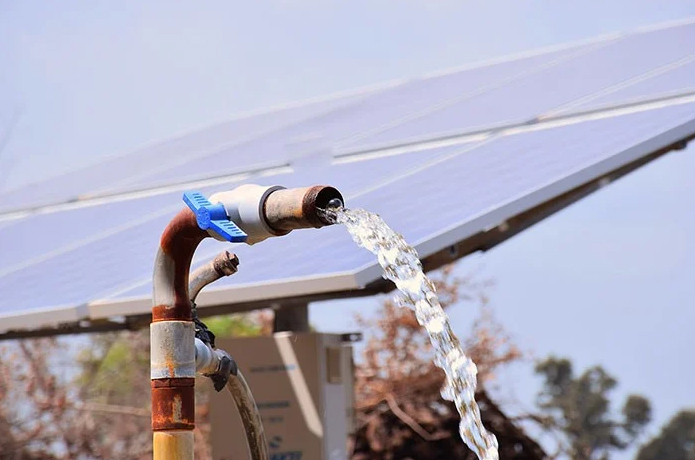Solar pumping system should be located in a sunny spot where no shading occurs. Altitude is not a factor, but height off the ground will affect whether or not you are able to keep them clear of snow.
Solar panels should be angled optimally for solar gain, particularly during the shorter winter days. If your site is in the northern hemisphere you should point your panels to true south. The reverse is true for places in the southern hemisphere. For many locations there is quite a difference between magnetic south and true south, so you should consult a declination map before setting your mounting structure.
The solar panels should be tiled up from horizontal to get a better angle at the sun and to help shed rain and snow. For best year round power output, with the least amount of maintenance, you should face the solar panels true south at a tilt angle equal to your latitude with respect to the horizontal position.

If you are able to adjust the solar panel seasonally, a good rule of thumb is:
- Latitude minus 15 degrees in the summer.
- Latitude in the spring/fall.
- Latitude plus 15 degrees in the winter.
A careful design approach
When a generator or utility main is present, we use a relatively large pump and turn it on only as needed. With solar pumping system, we don’t have this luxury. Solar pv panels have come down much in cost but aren’t inexpensive, per se, so we must size our systems carefully. It is like fitting a suit of clothes; you need all the measurements. For solar water pumps, first identify how much water you need per day and the vertical lift required.
Next we will determine whether a submersible well pump or a surface pump is best. This is based on the nature of the water source. Submersible pumps are suited both to deep well and to surface water sources. Surface pumps can only draw water from about 20 feet (3m) below ground level, but they can push it far uphill. Where a surface pump is feasible, it is less expensive than a submersible, and a greater variety is available.